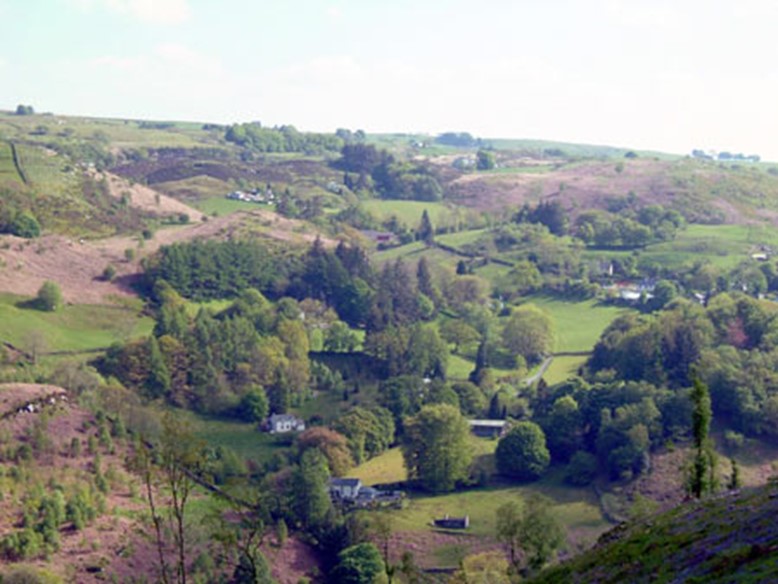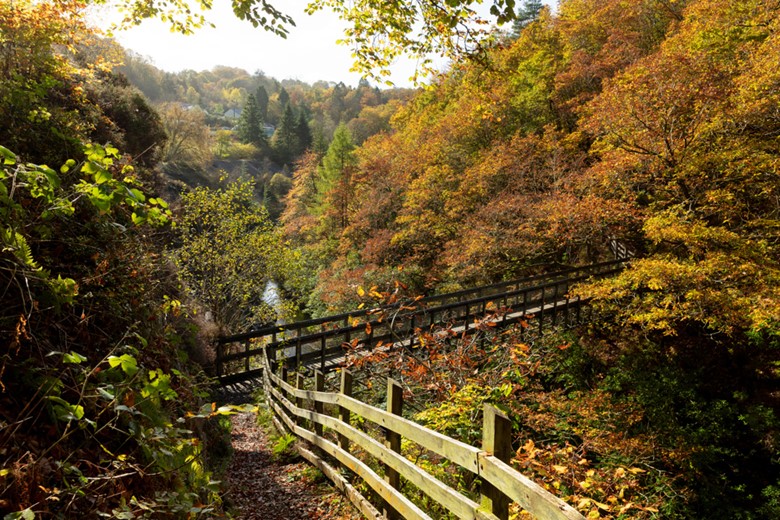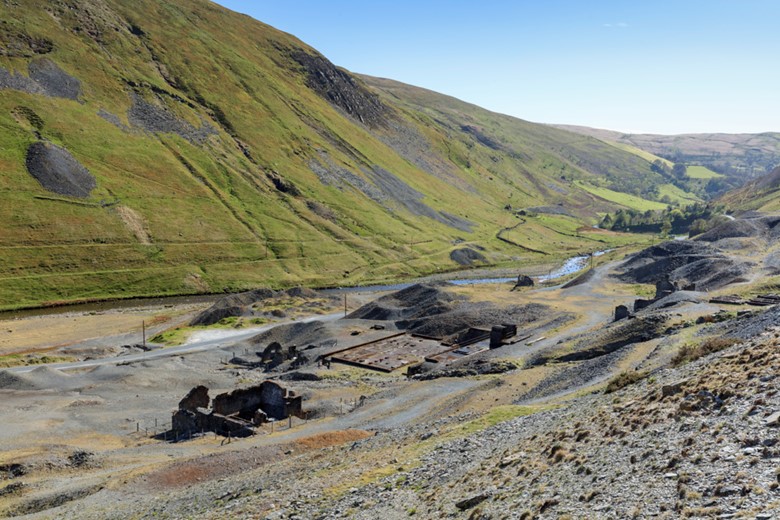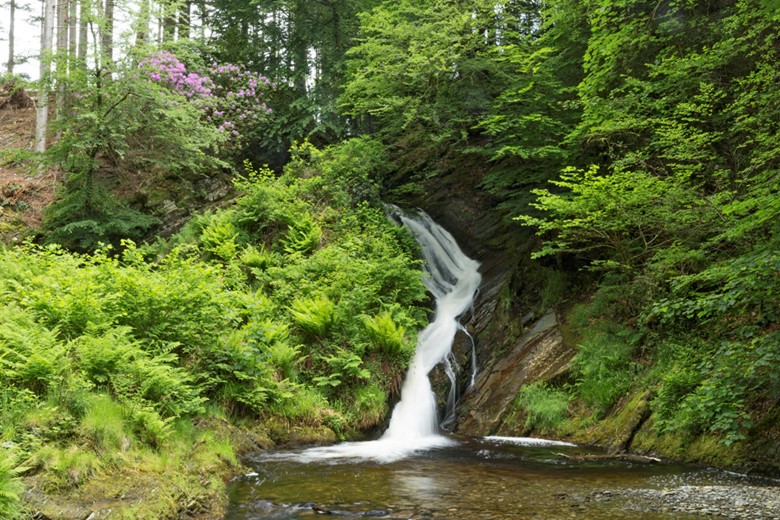
Pontrhydygroes is set on the wooded slopes of the Ystwyth valley and was described by Victorian tourists as a 'little Switzerland'. Pontrhydygroes is a former silver-lead mining village, with buildings recalling the height of the industry in the area, including a 'counting house' a restored working waterwheel, an imposing chapel, and a pub called, of course, the Miners Arms.

The restored Miners Bridge crosses the gorge over to the Ystwyth to the nature reserve of Coed Maenarthur (The woods of Arthur's stone where the paths lead to an ironage hillfort.
Ysbyty Ystwyth lies further up the hill, it's name reminding us that the little church ('Ysbyty' comes from the association with the Knights Hospitallers) was a stopping point on the Medieval pilgrimage route from Llanbadarn to the Cistercian Abbey of Strata Florida.
Cwmystwyth
The mines of Cwmystwyth have a history stretching back from their closure in the mid 20th century to prehistoric times. The site was mined in Roman times and later by Cistercian monks from Strata Florida Abbey. The spoilheaps, dressing floors and the miners barracks dominate the western slopes of the valley once you have passed through the village.

Siloam chapel is the most prominent building at the heart of the hamlet of Cwmystwyth. It is where the local eisteddfod and the village archives are held. Family roots can be researched at St Michael's and All Angels church, known also as Eglwys Newydd ('new church' rebuilt in Gothic style in the 19th century) but perhaps even better known as Hafod Church. Restored after a devastating fire in the 1930s, monuments include the touching memorial to the only daughter of Thomas Johnes of Hafod Uchtryd.
The Hafod Estate
Thomas Johnes transformed the landscape and the agricultural practices of his Hafod estate, experimenting with dairy farming, forestry and gardening. He built an elegant mansion which featured a library designed by John Nash, and laid out his grounds with paths and monuments to enhance its natural features of woods and waterfalls.

The walks which led to a succession of views which Johnes created attracted visitors from far and wide to admire the panoramas that epitomised the principles of the Picturesque movement which was the height of fashion at the time The restored walks and garden features continue to attract and entertain today, but sadly, the mansion is lost, damaged by devastating fires, and ultimately dynamited by the Forestry Commission in the 1950s.
